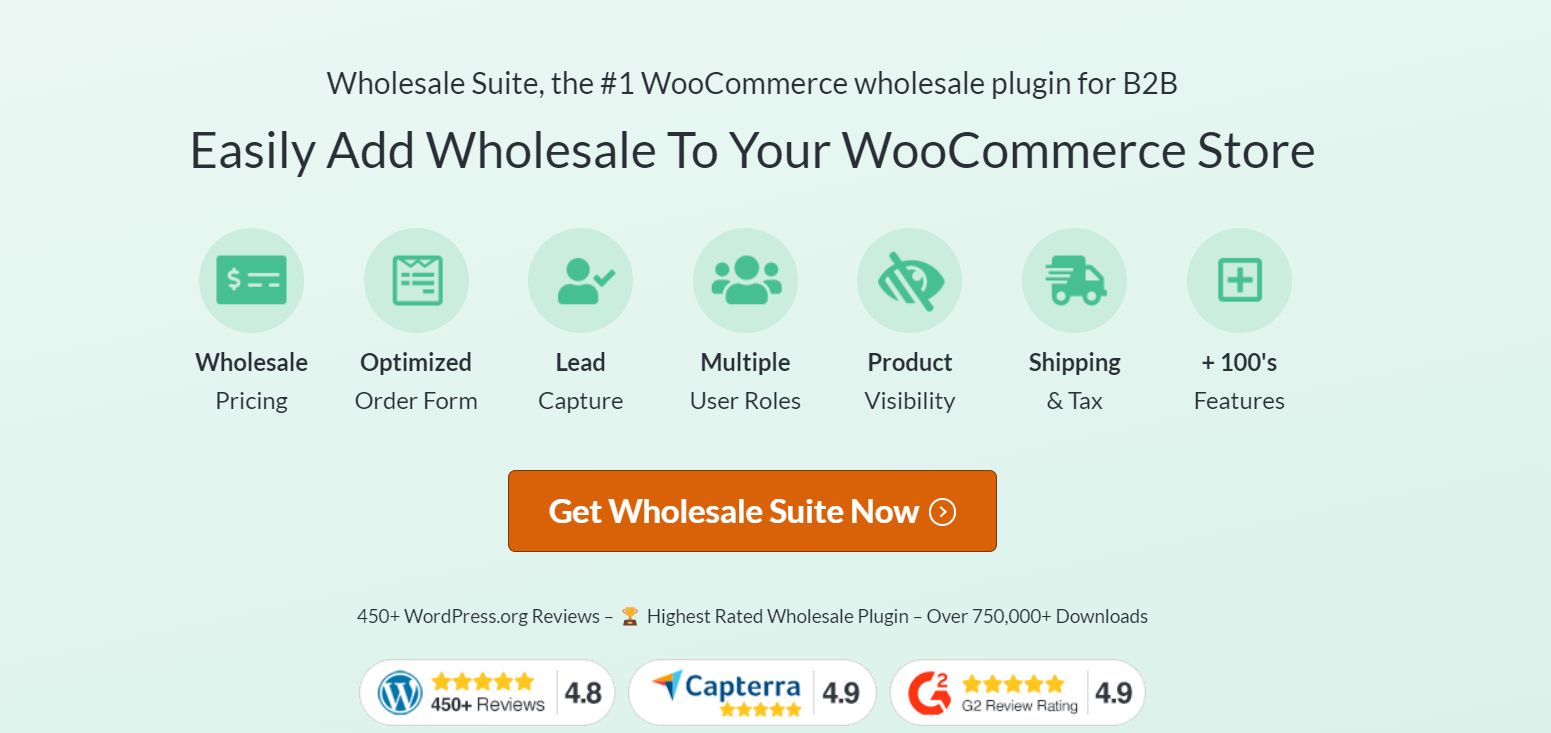
Starting an online business has never been more exciting, but let’s face it—traditional dropshipping isn’t for everyone. Maybe you’ve tried it and felt stuck with thin profit margins or slow shipping. Or maybe you’re still thinking about it, but you’re worried about competition and control. That’s where these dropshipping alternatives come in.
There are now easier, smarter, and more flexible alternatives to dropshipping to suit different goals, whether you’re trying to make quick cash, build your brand, or grow a side hustle into a full-blown business. This guide breaks down seven easy options you can start today, even if you’re new.
So if you’ve been looking for better business models to try, here are the most beginner-friendly alternatives for dropshipping that might just work better for you.
7 Easy Dropshipping Alternatives You Can Try
1. Print-on-demand (POD)
Print-on-demand is one of the most popular dropshipping alternatives today because it gives sellers creative freedom and simple automation. You can launch an online store with just a few designs, then scale it up as you go. Since you only pay for the product after a customer orders it, the risk is low. Just make sure your product pricing covers your costs and still leaves you a good profit margin.
How it works: You design custom products like t-shirts, mugs, hoodies, or tote bags. When someone places an order, a supplier prints and ships the item directly to the customer.
Why it’s easy: You don’t need to keep any inventory. You don’t need to pack or ship anything yourself. Once your store is set up, everything is automatically handled by your print partner.
Best for: This is perfect for artists, creators, and small merch stores. If you like designing or have a loyal online following, POD can be a fun way to sell without managing stock.
2. Online marketplaces
Online marketplaces are simple and low-risk, which is why they’re popular alternatives to dropshipping. You get a quick start and can shift to your own site later once you find what works.
What it is: Online marketplaces let you sell products without building your own website. You just make a seller account, upload product photos, set your price, and wait for buyers.
Why it’s easy: These platforms already have traffic. People are searching and buying every day. You don’t need to worry about setting up an entire online store from scratch. The system handles payments, and most platforms even help with shipping labels and logistics.
Best for: Beginners, handmade sellers, or anyone testing out product ideas. If you’re not ready to commit to a full brand yet, this is one of the easiest business models to start.
A great way to make this even better is by using tools like WC Vendors. It’s a marketplace plugin that turns a WooCommerce site into a multi-vendor platform. That means you can let other sellers list on your site, too. It’s perfect if you’re thinking long-term and want more control while still keeping things beginner-friendly.
If you want to learn more about multi-vendor marketplaces, you may read, “WooCommerce Multi-Vendor: 8 Best Ways For Marketplace Growth.”

3. Affiliate marketing
With the right setup, affiliate marketing can become a solid stream of passive income. You can earn while you sleep, especially if your links are on high-traffic content.
What it is: You promote other people’s products and earn a commission when someone buys through your link. No need to handle orders, shipping, or customer service. You just focus on getting clicks and sales.
Why it’s easy: There’s zero product handling. You don’t need to talk to customers or answer questions about shipping delays. Everything is taken care of by the actual seller.
Best for: Bloggers, YouTubers, and content creators on social media. If you have an audience or want to build one, affiliate marketing is one of the best alternatives for dropshipping.
Compared to other online business ideas, this model works well for people who love content but don’t want to manage inventory. Just remember, the key is promoting products that match your brand and values, so your audience trusts your recommendations.
4. Digital products
Among all dropshipping alternatives, digital products have some of the highest profit margins. You’re not paying for materials or shipping, and most platforms (like Gumroad and WooCommerce) let you sell downloads directly. This model works well if you’re already part of an online community or niche audience.
Examples: Digital products can be anything from downloadable templates and ebooks to online courses, design assets, or printable planners.
Why it’s easy: You only have to create the product once. After that, you can sell it as many times as you want—no inventory, no shipping, and no return handling. Buyers get their files instantly after payment.
Best for: This is ideal for educators, creatives, and anyone who wants to earn passive income. If you have useful knowledge or tools to share, digital products are a strong choice.
Selling digital products also gives you a lot of freedom. You can build your own online store, set your prices, and update your content whenever you want. If you’re thinking long-term, this is one of the smartest business models for scaling up without needing a big team or budget.
5. Retail arbitrage
Retail arbitrage is one of the fastest alternatives for dropshipping because it doesn’t require long-term planning. You can start today with just a few items. You get to control your product pricing, which gives you a chance at a better profit margin than traditional dropshipping.
How it works: You find items on sale or clearance from local stores or online shops. Then you resell them for a profit on platforms like Amazon, eBay, or WC Vendors.
Why it’s easy: The startup cost is low, and you don’t need to buy in bulk. Many sellers start by flipping just a few items at a time. You can do it on weekends or during sales seasons for quick cash.
Best for: This is great for bargain hunters, resellers, and anyone who enjoys finding deals. It’s also good if you want fast results without setting up a full online business right away.
The key takeaway here is speed. If you’re looking for something quick and flexible, and you don’t mind a bit of hustle, retail arbitrage could be the right fit for your situation.
6. Wholesale buying
Out of all the dropshipping alternatives, wholesale buying gives you the most control over your business model. Yes, you’ll need a bit more capital upfront, but the rewards are higher. You can keep better track of your profit margins, avoid supplier issues, and build trust with repeat customers.
What it is: You purchase products in bulk directly from suppliers at discounted rates. Then, you sell each item individually through your online store or local channels.
Why it’s easy: Buying in bulk gives you more control over your pricing, stock, and shipping. Since you’re the one storing the products, you can check quality, pack items your way, and ship them faster.
Best for: This works well for sellers who have storage space or plan to sell locally. It’s also ideal for those who want to build a consistent brand without relying on third parties.
If you’re using WooCommerce, Wholesale Suite is a must-have tool. It helps store owners run a wholesale-friendly site by adding pricing tiers, order forms, and wholesale user registration. You can even set rules for wholesale discounts and manage bulk buyers without needing a separate site. It’s perfect for anyone serious about running a full-scale online business while keeping operations clear and simple.
7. Local delivery and pickup options
This model is growing as more people support small businesses in their area. It’s one of the more personal alternatives to dropshipping because you get to interact with buyers directly and build a local following. Even a simple Facebook Page and a Google Form can help you take orders.
How it works: You sell products online, but instead of shipping them nationwide, you focus on your local area. Customers either pick up their orders or you deliver them within a specific zone.
Why it’s easy: You skip the headaches of national shipping, lost parcels, or long delivery times. It’s also faster for customers and can save you money on packaging and logistics.
Best for: Local crafters, small food businesses, or sellers with products that don’t ship well. It also suits people with limited budgets who want to test the waters before expanding.
If you want to grow it, you can later turn your setup into a full online store using tools like WooCommerce and local delivery plugins. This method is also a good stepping stone before going national or international.
Which Dropshipping Alternative Is Right For You?
Choosing the right path really depends on what you want out of your online business. Each of these dropshipping alternatives has its own strengths. Some are better for creative people, while others work well for bargain hunters or local sellers. It all comes down to your goals, your time, and how hands-on you want to be.

If your focus is on passive income, digital products or affiliate marketing are great options. They let you earn while you sleep without dealing with inventory. For creative sellers who want full control over their brand, print-on-demand and wholesale buying give you more power over design and pricing. And if you’re after quick wins, retail arbitrage or online marketplaces are some of the fastest ways to get started with low risk.
What’s the best part here? You don’t have to stick to just one model. Many sellers test different alternatives to dropshipping until they find one that works for them. What matters is that you choose something that fits your schedule, budget, and skills. All of these business models are valid and used by thousands of real sellers today.
Frequently Asked Questions
Starting with a few common questions can help you feel more confident in picking the right path. Here are answers to things many people wonder about when thinking of dropshipping alternatives.
Is there anything better than dropshipping?
Yes, there are many alternatives to dropshipping that people find better, depending on their needs. If you want more control, better profits, or less customer service stress, models like affiliate marketing, digital products, or wholesale buying might be better for you.
Is it still worth it to dropship?
Dropshipping can still work, but it’s not the only way to run an online business. Many people are moving to other business models because of the long shipping times, varying profit margins, and tough competition. That’s why more sellers are now trying alternatives for dropshipping that offer faster results and more freedom.
Are all dropshippers successful?
No, not everyone succeeds with dropshipping. It takes time, testing, and often money to make it work. That’s why many new sellers look for dropshipping alternatives that are easier to control and less risky.
What is drop surfing vs dropshipping?
Drop surfing is like dropshipping, but you switch suppliers often to find the cheapest price. While it sounds smart, it can lead to problems like slow shipping or poor product quality. Many people skip this and go for other business models that feel more stable.
What is the opposite of dropshipping?
The opposite would be buying and storing products yourself, like wholesale buying. You handle the items, control how they’re packed, and ship them yourself. This is one of the most common alternatives to dropshipping because it gives you full control over your brand and stock.
Final Thoughts
Each of the dropshipping alternatives we covered offers its own path. Some are perfect for creatives who want to sell designs without holding stock. Others are better for people who enjoy finding deals, building a brand, or running a local delivery setup. What matters most is choosing the business model that works with your life, not against it.
Here are the dropshipping alternatives we discussed:
- Print-on-demand
- Online marketplaces
- Affiliate marketing
- Digital products
- Retail arbitrage
- Wholesale buying
- Local delivery and pickup options
After helping hundreds of wholesale store owners grow their businesses at Wholesale Suite, we’ve seen one thing: dropshipping isn’t your only option. If you’re still unsure where to start, take this as your sign just to pick one and try. Even the most successful store owners started with small steps.
Whether you launch a print-on-demand tee, flip a few retail finds, or upload your first digital product, it’s all progress. With so many alternatives for dropshipping now available, there’s really no one-size-fits-all. The best part is—you don’t need to get it perfect on the first try. You just need to start.
Do you have questions about dropshipping alternatives? Let us know in the comments!






